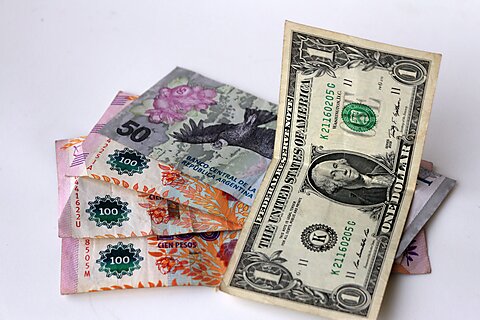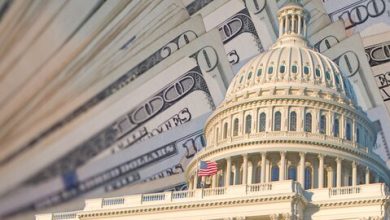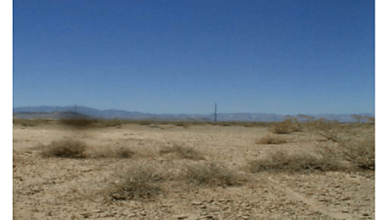The Economist Gets It Wrong on Dollarization in Argentina

Daniel Raisbeck and Gabriela Calderon de Burgos
In a recent article, The Economist assures that inflation‐ridden Argentina should not and cannot dollarize. The publication’s anti‐dollarization stance is part of a broader warning against free market economist Javier Milei, who gained a surprise victory in last month’s primary elections and vows to dollarize the Argentine economy if he wins the presidency later this year.
The Economist misunderstands the most fundamental aspects of Milei’s plan to dollarize Argentina and shut down its central bank. This is, in fact, the best thought‐out and most urgent part of his political platform. It affirms, for instance, that “Argentine banks and households would need a float of dollars to get up and running, which Mr. Milei has no way of providing.”
Dollarization and Available Dollars
As we explain in our recent policy brief, Argentina’s central bank might lack dollars, but Argentine citizens and companies do not. Private sector actors do try to shield themselves from the country’s frequent bank runs by holding dollars in other jurisdictions or under their mattresses. At the end of 2022, Argentines held over $246 billion in foreign bank accounts, safe deposit boxes, and mostly undeclared cash, according to Argentina’s National Institute of Statistics and Census. This amounts to over 50 percent of Argentina’s GDP in current dollars for 2021 ($487 billion). Hence, the dollar scarcity pertains only to the Argentine state.
To dollarize, Argentina needs to replace the peso‐denominated monetary base with the equivalent in U.S. dollars at — or slightly above — the free market rate of exchange. Dollarizing at a rate far above that of the free market would be counterproductive because it would produce even higher inflation levels for a prolonged period. On the other hand, dollarizing at a rate below the free‐market exchange rate would lead to a bank run because depositors would act to protect their savings from a forced devaluation.
In Argentina’s particular case, there is an official exchange rate—currently ARS $365—which most people cannot access. Hence, the black market exchange rate, known locally as the “blue dollar,” is the closest approximation to what a free‐floating peso would be worth in dollar terms. At the moment, ARS $740 will buy you one blue dollar.
In Argentina’s case, economist Iván Carrino argued in May that, while the central bank’s liabilities amounted to ARS $18.8 trillion, dollarizing overnight at ARS $470, the blue dollar exchange rate at the time, would have required around USD $40 billion (the result of dividing the central bank’s liabilities by the exchange rate). The central bank’s total assets, meanwhile, were worth $34.5 billion. In theory, therefore, the government would have lacked around $5.5 billion—or around 1.1 percent of GDP— to dollarize at the market rate.
Nevertheless, the aforementioned imbalance is not as significant as it may seem at first. The last two dollarization processes in Latin American countries prove that “purchasing” the entire monetary base with U.S. dollars from one moment to the next is not only impractical, but it is also unnecessary.
The Mechanics of Dollarization
In both Ecuador and El Salvador, which dollarized in 2000 and 2001 respectively, dollarization involved parallel processes. In both countries, the most straightforward process was the dollarization of all existing deposits, which can be converted into dollars at the determined exchange rate instantly.
As Argentine economist Nicolás Cachanosky explains, when you dollarize deposits, the danger of a bank run is minimized insofar as dollarization takes place at the market rate and monetary transactions continue to take place within the banking system.
Crucially, in both Ecuador and El Salvador, dollarization not only did not lead to bank runs; it led to a rapid and sharp increase in deposits, even amid economic and political turmoil in Ecuador’s case. With the mere announcement of dollarization in January 2000, Ecuadorians began to deposit their dollars in banks even though the latter were so beleaguered they were paying negative interest rates.
The tendency held. Between January and December of 2000, Ecuador’s total deposits increased by $733 million, whereas the total amount of international reserves in December of 1999 stood at a mere $872 million. Also, whereas deposits accounted for just around 15 percent of GDP in 1999, they had increased to 19.1 percent of GDP at the end of 2000.
Deposits continued to increase over the following decades. At the end of 2022, Ecuador’s deposits amounted to 37.9 percent of GDP. By way of comparison, Argentina’s deposits reached a meager 22.5 percent of GDP at the end of last year.
Dollarizing the Circulating Currency
The other, parallel dollarization process involves turning the national currency in circulation into U.S. dollars. Critics who claim that Argentina cannot dollarize due to an insufficient amount of dollars assume that the government must count with the entire dollar amount necessary to buy all pesos in circulation on day one. Nevertheless, this was not the case in either Ecuador or El Salvador.
In Ecuador, the sucres in circulation were dollarized within a nine‐month period mandated by the government, which had to rely on the Coca‐Cola Company’s supply network to exchange dollars for sucres in remote rural areas.
According to Miguel Dávila, the president of Ecuador’s central bank when dollarization took place, the monetary authorities only had to back the central bank’s liabilities that needed to be liquid on day one of dollarization. These included all sucre coins and bills in circulation, banking reserves deposited at the central bank, and central bank deposits from state entities that were likely to require immediate withdrawals. The rest of the central bank’s liabilities were not available for withdrawal immediately. Rather, they were restructured.
This seemed like a risky bet. In December 1999, the central bank’s liabilities in dollars amounted to $1.25 billion, a figure that far surpassed the country’s international reserves. Experts thus claimed that dollarization was only viable at the extremely high exchange rate of 40,000 sucres. The market rate on the streets, meanwhile, was at or above 25,000 sucres. So who provided the dollars?
Ecuadorians did. Dollarization was announced on January 9, 2000, at a near‐market rate of 25,000 sucres per dollar. By September of that year, 97 percent of all sucres in circulation—equivalent then to $577 million— had been exchanged for dollars. In other words, new dollar deposits had matched and even surpassed the dollar amount of the circulating national currency.
Emilio Ocampo, the Argentine economist whom Milei has put in charge of plans for Argentina’s dollarization should he win the presidency, summarizes Ecuador’s experience thus:
People exchanged their dollars through the banks and a large part of those dollars were deposited in the same banks. The central bank had virtually no need to disburse reserves. This was not by design but was a spontaneous result.
The Salvadoran Model
Dollar deposits also increased spontaneously in El Salvador, a country that dollarized in 2001. By the end of 2022, the country’s deposits amounted to 49.6 percent of GDP—in Panama, another dollarized peer, deposits stood at 117 percent of GDP.
El Salvador’s banking system was dollarized immediately, but the conversion of the circulating currency was voluntary, with citizens allowed to decide if and when to exchange their colones for dollars. Ocampo notes that, in both Ecuador and El Salvador, only 30 percent of the circulating currency had been exchanged for dollars four months after dollarization was announced so that both currencies circulated simultaneously. In the latter country, it took over two years for 90 percent of the monetary base to be dollar‐based.
Cachanosky explains that, in an El Salvador‐type, voluntary dollarization scenario, the circulating national currency can be dollarized as it is deposited or used to pay taxes, in which case the sums are converted to dollars once they enter a state‐owned bank account. Hence, “there is no need for the central bank to buy the circulating currency” at a moment’s notice.
The corollary is that, although it is important for Argentina’s new government to announce dollarization as quickly as possible, the actual process of dollarizing the circulating currency can and should be drawn out. The region provides two relatively recent and successful examples of dollarization, one of which (Ecuador) was achieved fully in nine months, the other (El Salvador) in roughly 24.
The Remaining Stage of Dollarization in Argentina
The most difficult stage of dollarizing Argentina involves a particular feature of that country’s recent and tremendous inflationary build‐up: namely, the $30 billion in LELIQ liquidity notes that, as we explain in our policy brief, are a fiscal time bomb:
The central bank issues LELIQs to mop up pesos from the market in an attempt to revive domestic demand for the local currency. Despite their constant escalation, nominal LELIQ interest rates—the current rate is 97 percent, versus 38 percent in early January 2022—have not kept up with what is now triple‐digit inflation. The effective rate, on the other hand, stands at an astronomical 155 percent per annum.
The central bank has only been able to pay for such drastic interest rate hikes by expanding the monetary base aggressively, thus boosting inflation further. Since higher inflation leads to greater demand for hard currency, the use of LELIQs as a means to strengthen the peso has become counterproductive.
Ocampo and Cachanosky, who co‐wrote a book titled Dollarization: A Solution for Argentina, propose to defuse the LELIQ bomb without defaulting or taking on further debt. The plan, which we summarize, involves swapping the central bank’s assets—namely, its loans to the Argentine treasury—for bonds in a foreign jurisdiction. As we summarize, the latter would then be deposited
In a new trust with the ability to issue asset‐backed commercial paper with short‐term maturities. The trust, which would be supported by an underwriting backstop facility … would swap LELIQs for dollar‐denominated commercial paper, which would be paid off with proceeds from the trust’s assets until the entirety of LELIQ debt is liquidated.
Whether or not LELIQ debt is dollarized and restructured in this fashion, the issue at stake is not whether Argentina now has enough dollars to do so. The issue is that the central bank has no liquid assets with which to back this rapidly growing liability. With or without dollarization, the next government, which will take office in December, will have to deal with the LELIQ problem. After all, LELIQs are a fiscal liability of the Argentine state which will have to be restructured with or without dollarization and even without a central bank.
If done correctly, dollarization can provide a positive confidence shock that can help the new government steer Argentina away from the fiscal cliff. In fact, adopting a sound currency and reaching single‐digit inflation levels as soon as possible are prerequisites for all the other supply‐side reforms that Argentina needs. Dollarization is the surest and fastest way to achieve that. Furthermore, restructuring any fiscal obligation, including the LELIQs, becomes far easier with lower interest rates, another proven benefit of dollarization.
Is There a Realistic Alternative to Dollarization?
In fact, the burden of proof falls on dollarization’s critics, many of whom reveal a Panglossian belief in the sudden emergence of a responsible and independent central bank in Argentina, to show how they intend to stabilize the Argentine economy without granting legal tender to a hard currency. As Cato Senior Fellow Lawrence White explained with regard to Ecuador, “the relevant alternative to dollarization is thus not an imagined regime in which precisely calibrated depreciations of the local currency’s exchange rate are administered by experts to adjust wages.”
That is, the purported costs of losing the ability to depreciate the local currency with utter precision should be compared with the actual, massive costs of the central bank’s excessive money creation, spurred as it is by the fiscal profligacy of Argentina’s political class. It is true that ipso facto, dollarization will not turn Argentine politicians into fiscal conservatives. However, adopting the dollar will separate fiscal policy from monetary policy, which will no longer respond to local political pressure. Hence, dollarization in Argentina will significantly limit the scope of the damage that reckless fiscal policy can wreak. This brings us to another of The Economist’s mistaken assumptions
The Point of Dollarization
In its article on Milei, The Economist also argues that dollarization would make any future default “even more painful, since there would be no lender of last resort if Argentina’s central bank disappeared with the peso.” Argentina, however, already has no effective lender of last resort at the national level. Instead, its governments turn recurrently to the IMF (International Monetary Fund) as a de facto lender of last resort that provides them with—what else?—U.S. dollars.
The Economist adds that, even with dollarization, Argentine politicians “would still try to borrow too much, and there would be no central bank to inflate the debt away.” This fully misses the essential point behind the adoption of the dollar, which is to protect ordinary people’s purchasing power from the excesses of chronically profligate politicians and often subservient—or simply incompetent—central bankers. As we have mentioned, by depriving the local political class of all ability to manipulate the currency, dollarization separates fiscal policy from monetary policy.
This is why, as Manuel Hinds, a former finance minister in El Salvador, has explained, solvent Salvadorans in the private sector can borrow at rates of around 7 percent on their mortgages while international sovereign bond markets will only lend to the Salvadoran government at far higher rates. As Hinds writes, under dollarization, “the government cannot transfer its financial costs to the private sector by printing domestic money and devaluing it.”
This is yet another lesson of dollarization’s actual experience in Latin American countries. It is also a reason why the vast majority of the population in the dollarized nations has no desire for a return to a national currency. The monetary experiences of daily life have taught them that dollarization’s palpable benefits far outweigh its theoretical drawbacks.





